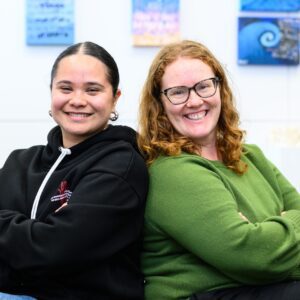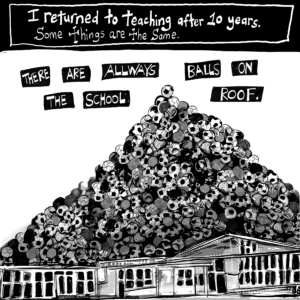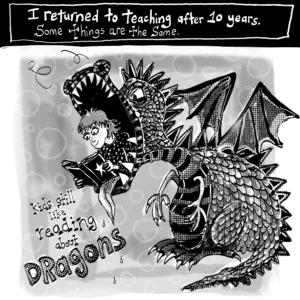West End Te Kura Ō Mōrere is nestled in the western edge of New Plymouth’s CBD, with a huge field, a bike track, and a wetland area.
Teachers Warren Smart (Ngāti Porou, Te Aitanga-a-Hauiti) and Carri-Anne Stone had the Cultural Leadership Allowance funding split between them.
“The principal approached both of us, which was a surprise – and humbling and nice,” says Warren.
“We aren’t doing it for the money, and I think that’s obvious for anyone who received it. You do it because you’re passionate about it, and that’s whether it’s to do with sports or the arts, or culture, or whatever. You put yourself in a position to do extra because it means something to you.”
We aren’t doing it for the money, and I think that’s obvious for anyone who received it. You do it because you’re passionate about it, and that’s whether it’s to do with sports or the arts, or culture, or whatever. You put yourself in a position to do extra because it means something to you.
They both acknowledge the support of Matua Peter Taylor, who is mana whenua through Te Ātiawa and Ngāti Te Whiti. He is employed by various Taranaki schools and is at Te Kura Ō Mōrere one day a week. He has been at the school for about ten years, in various capacities.
“Matua Pete talks about participation, and how Māori participate in Pākehā spaces and Pākehā don’t always participate much in Māori spaces,” says Warren.
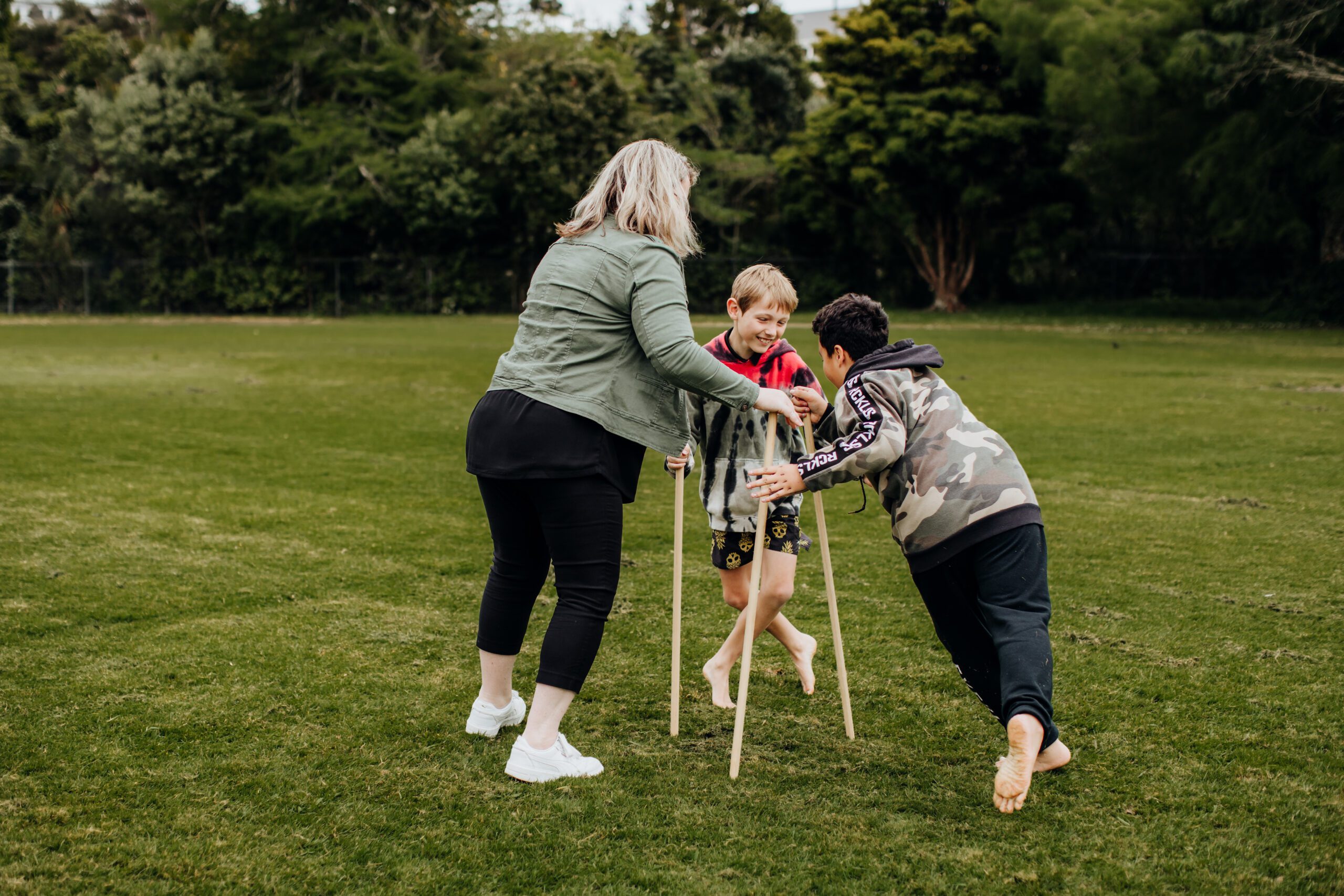

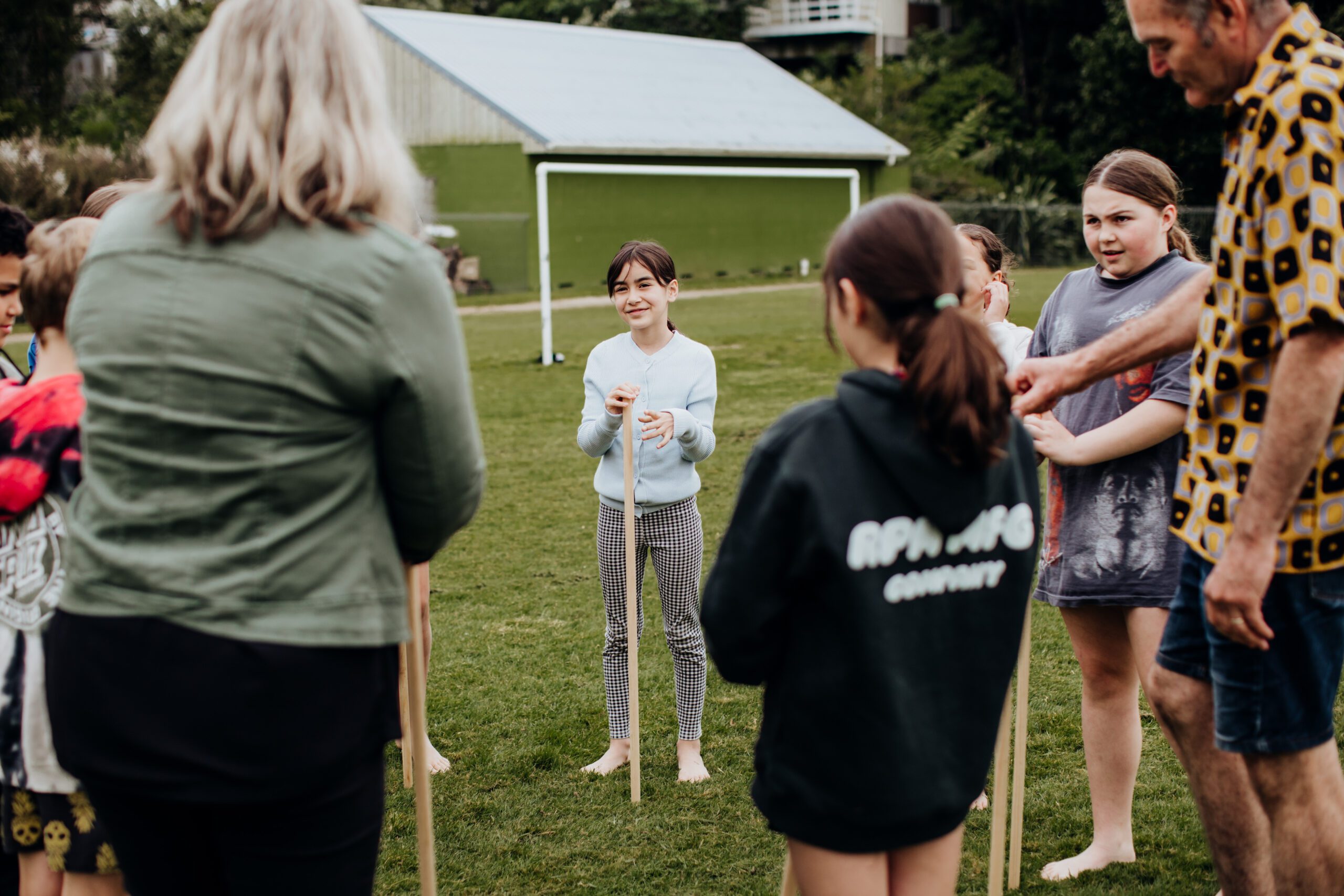
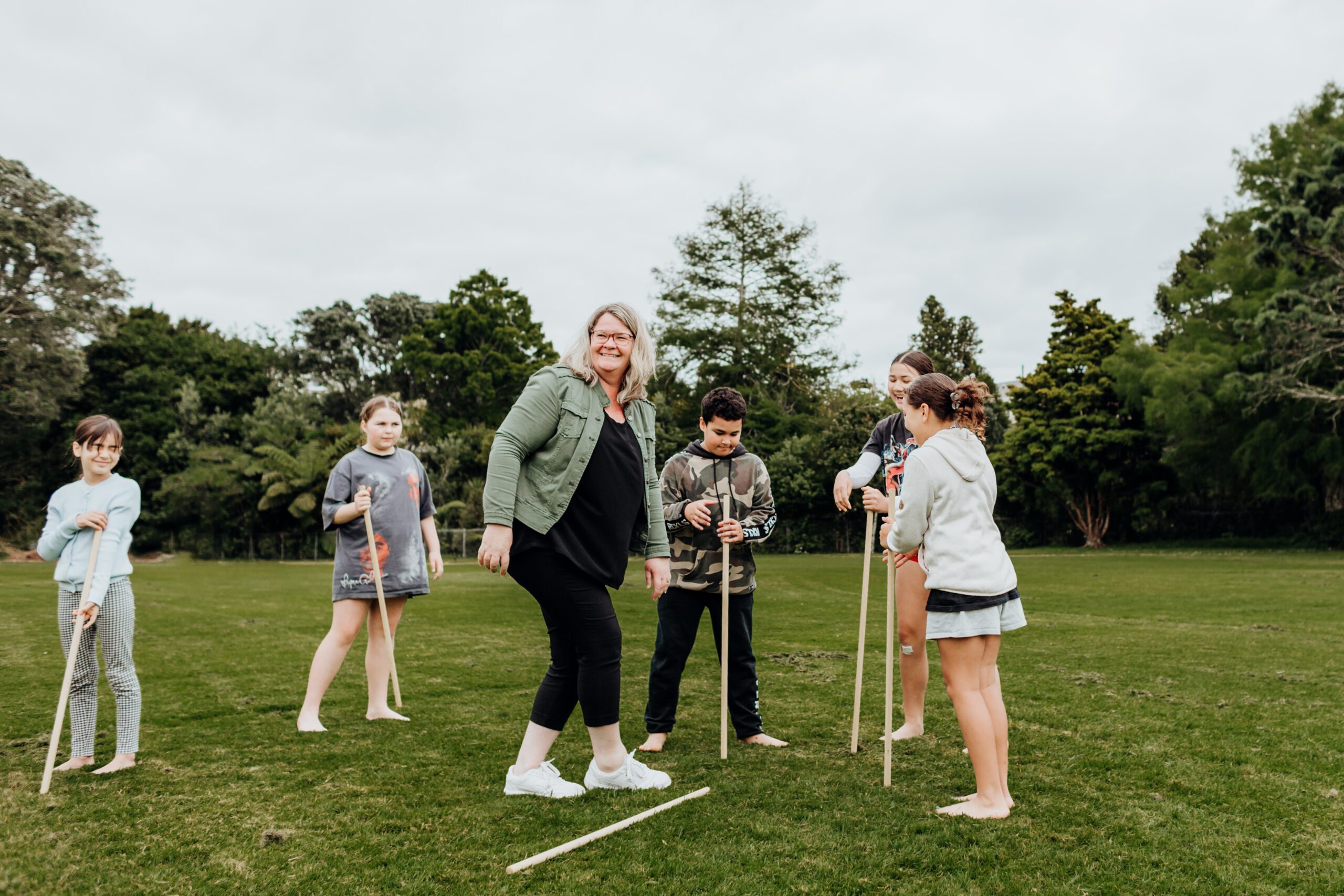
“This year, we’ve had pōwhiri every term for our new tamariki and kaiako,” Carri-Anne says. “It’s quietly done. We are still learning. But the more we do, the better we get, and we won’t need to rely on Matua Pete. At some point you’ve got to step up.”
Hamish Hislop (Kāi Tahu) was appointed as principal at the school in 2022. He says the school had been on a decade-long journey, begun by the previous principal, Mike Clarke, who became a foundation MAC (Māori Achievement Collaborative) principal in 2013. In 2015, the school worked alongside local iwi Ngāti Te Whiti to find a dual name for the school.
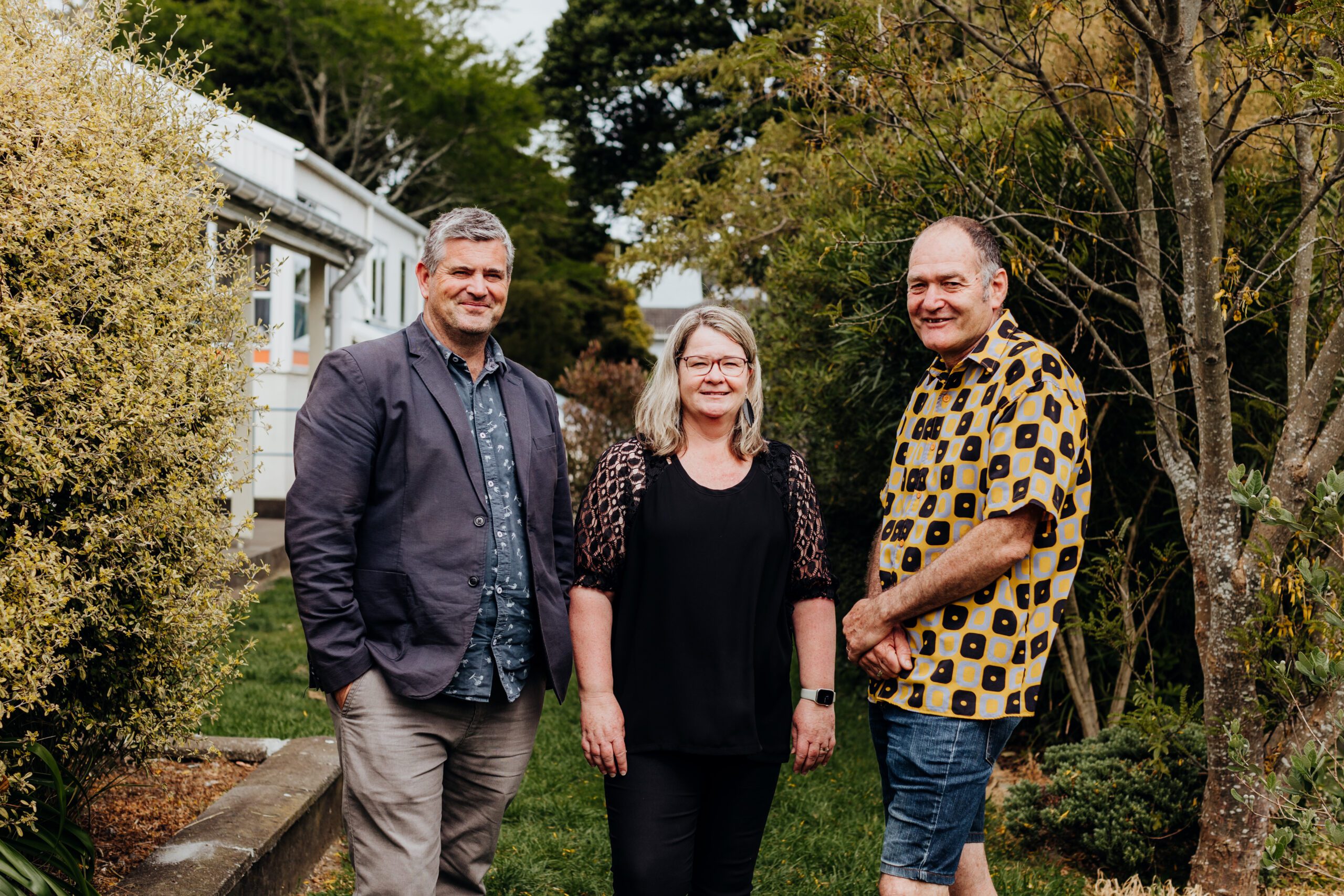
Warren said, “I had some connections, and we went to the hapū and asked for some help with the dual name. We didn’t want a transliteration, because it didn’t link us to anything. They came back with ‘Te Kura Ō Mōrere’.” It means ‘the school of swings’. Mōrere was a swamp that used to be near the school boundary that kids swung over. The name reminds the school they were part of the hapū and helps to form a partnership.
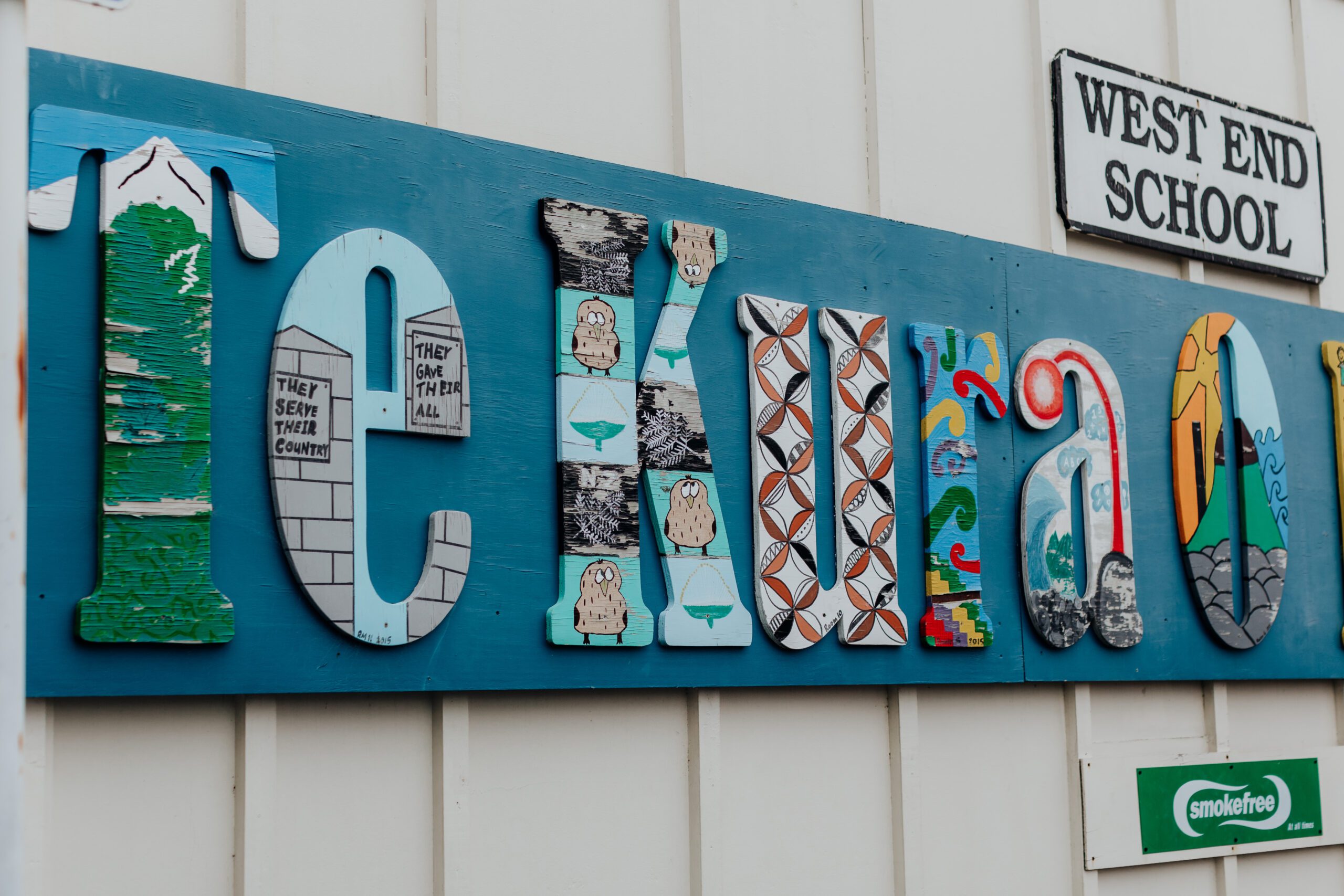

Carri-Anne puts on a slide show and flicks through a series of photographs. She started teaching at the kura in 2013. “It was a really good experience working with hapū. We had an unveiling.” She puts up a photograph of the brightly handpainted Te Kura Ō Mōrere sign that’s situated at the end of the school driveway. “Every child at school worked on a different letter in the name. Looking at that picture there, that was our first pōwhiri.”
Carri-Anne looks contemplative. “We’ve grown the capabilities along the way, with whānau teaching us, and once they feel we are capable, leaving us to it.”
We’ve grown the capabilities along the way, with whānau teaching us, and once they feel we are capable, leaving us to it.



Parihaka Pā is just a thirty-minute drive down the coast. “Till Covid we were going every year to the marae at Parihaka or Ōwae,” says Warren. “Covid happened, and now we’ve got a lot of kids coming through who have never been to the marae. We need to rebuild.”
The school holds a remembrance day on 5 November every year for the Parihaka invasion. “The more times you go to Parihaka, the more you understand,” Warren says. “And you start to understand links too. And that’s really important.”
Whānau are invited to the school for a hāngī twice a year, and to celebrate Puanga with a shared lunch and kapa haka performances.
Carri-Anne says, “It’s a really nice opportunity to meet whānau that you might not meet otherwise.” The kids are involved with the food preparation, and putting down and lifting the hāngī.
The aim was always for the school to be able to carry things. Warren says, “The long-term intention was always for them to walk away and leave us to it.”
He says it goes deeper, too. “You look at kapa haka or hāngī or pōwhiri, but it’s also about the achievement of our Māori kids. For the last three years, Carri-Anne and I have been at MAC Conference, and it gives you ideas and challenges you in lots of ways. The one this year was lots of local knowledge from Ngāpuhi, and that was fantastic because you try and think, ‘How can I make sure I know more about Taranaki?’”
Carri-Anne says, “We’ve had bus trips for the teachers around the local historical sites. You could do it ten times to keep embedding that understanding. We are slowly growing our capabilities, until it becomes part of the school kaupapa.”


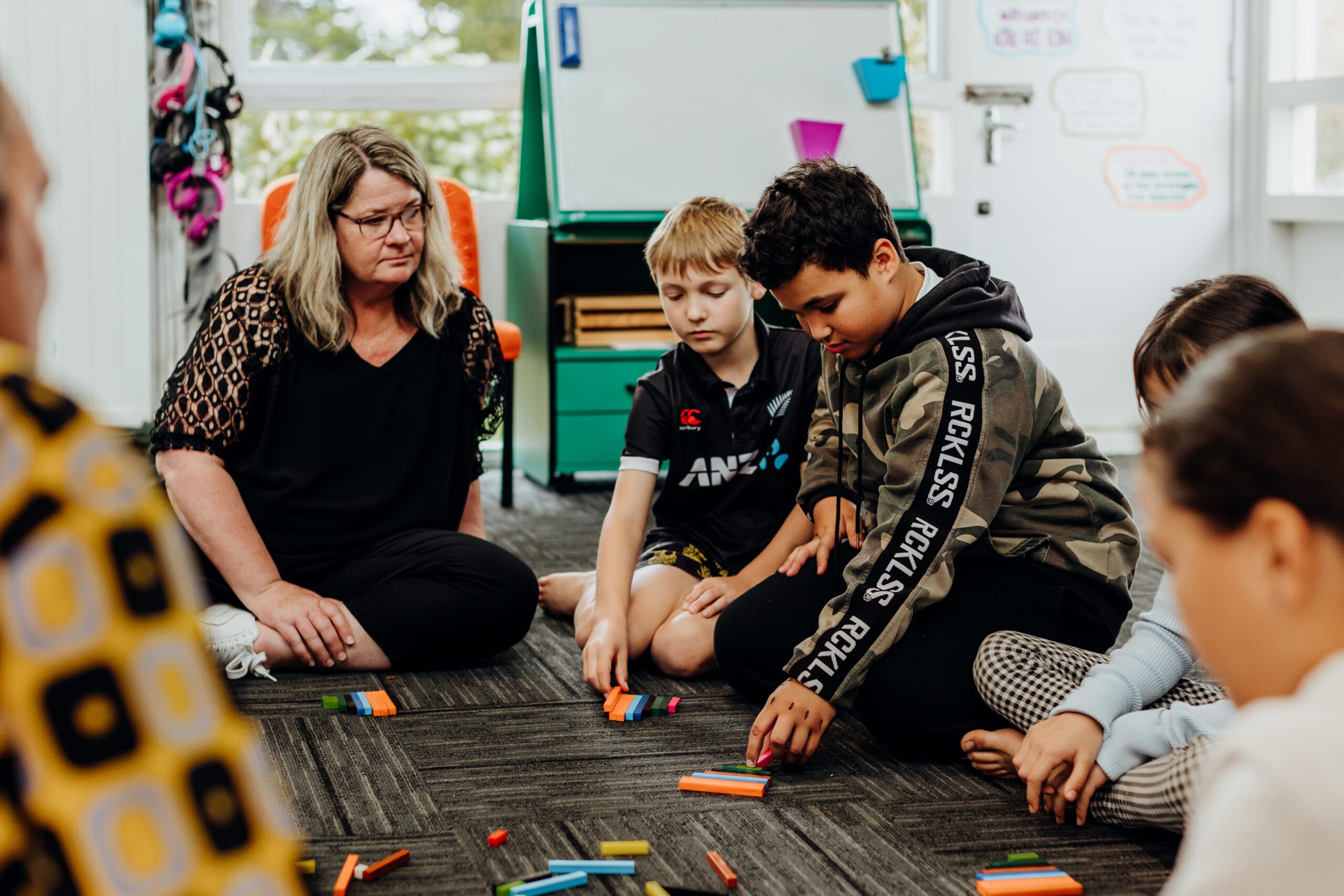
Sometimes the leadership role means putting things in front of the staff in staff meetings.
“When Hamish became principal, karakia before staff meetings became an integral part of what we do,” Carri-Anne says. “We also have the waiata chart and karakia accessible for staff to use in the classrooms.”
Carri-Anne and Warren both acknowledge Resource Teacher of Māori Whaea Tiri Bailey’s support. “We’ve been lucky.”
“A number of us have been involved with Te Ataarangi too, with Ruakere Hond. But the funding for that’s gone,” says Carri-Anne. “That was fantastic.”
“Over the next two terms we’ve got Haoro Hond, Ruakere’s son, coming in to do some mahi toi based around the whenua. He’s an ex-pupil. I taught him,” smiles Warren.
Carri-Anne says while the role is something she feels she can offer, as a non-Māori recipient of the funding, it is necessary to find the balance between stepping up and stepping back. “Our downfall is the karanga, but it’s also being aware. I’d offer to give it a shot, but it’s been suggested I shouldn’t put myself there.”
And it comes back to what the hapū would regard as correct tikanga, Warren points out.
“The other really good thing about it is that I’ve learned so much along the way,” he says. “I’ve learned how to do a hāngī, my te reo has improved, and that’s a motivating thing.”
There is no express requirement to be fluent in te reo Māori to receive the allowance. While a teacher’s language skills are relevant when the Cultural Leadership Allowance matrix is applied – because language is an important part of culture – a teacher who is still on a journey towards fluency in their reo, but who is otherwise well-versed in tikanga and who takes on cultural leadership responsibilities in their school, can still meet the eligibility criteria.

***
Leena Thomas (Ngāti Maru, Te Āti Haunui a Pāpārangi) is one of four senior teachers at Te Putahi Kura Pūhou o Taranaki / Kindergarten Taranaki. She supports teachers in 24 kindergartens across Taranaki, and was one of the recipients of the Cultural Leadership funding. The part of her role she most enjoys is to tautoko kaiako to lead the way in te ao Māori, so tamariki Māori will have a positive learner identity in all areas of life.
“It meant a lot to be recognised for all the work we do,” she says. “It felt like a real acknowledgement. We do a lot of work across the kindergartens to support and whakamana our kaiako Māori to stand [and] feel confident in who they are as Māori. That’s a powerful thing.”
It meant a lot to be recognised for all the work we do. We do a lot of work across the kindergartens to support and whakamana our kaiako Māori to stand [and] feel confident in who they are as Māori. That’s a powerful thing.
Part of supporting tamariki Māori to be affirmed as Māori in the kindergartens has been supporting assessment for Māori through a Mātauranga Māori lens, valuing whakapapa, whānau, and iwi aspirations and values.
“[We are] ensuring that our engagements are always mana-enhancing, and tamariki Māori develop a positive learner and Māori identity. We want to ensure we always have a Māori lens on our tamariki, not a default lens,” says Leena.
We want to ensure we always have a Māori lens on our tamariki, not a default lens.
In 2021, Te Hurihanga Whakatipu Professional Growth Cycle for Kaiako Māori was developed; it uses a cultural lens to support inquiry and professional growth.

One of Leena’s colleagues is Lucille Haupokia Rye (Ngāti Maniapoto, Tainui), a teacher at Frankleigh Park Kindergarten. She has been there for just over a year but has been teaching for the past twenty years. She received an email telling her she was a recipient.
“I was excited, like, wow, cool! But at the same time for me, being Māori, you do not need to pay me to do what I have been doing.” Her boss nominated her. “I speak te reo, well versed in my tikanga, it’s just an everyday thing for me. I kōrero all the time, I’m happy to share my mātauranga with everyone.”
Lucille had attended New Plymouth Girls’ High School as a boarder, and she and her husband moved back to Taranaki four years ago. “My husband got a transfer for his mahi, and I stayed on teaching back up home. There were a couple of jobs here I applied for and here I am.”
Lucille says the kindergarten has a great atmosphere. “The head teacher had brought karakia with her. That was cool.”
She grew up steeped in te ao Māori. “I’m not fluent, but I understand and can speak. It can be challenging teaching in the mainstream because there are not often confident people to converse with. We are lucky enough to have grown up with our culture with our Mum and Dad. We were always at the marae, different hui, and many tangi. We had the privilege of learning through being involved and doing the mahi. We also performed kapa haka.”
The mum of four adult children and grandmother of sixteen mokopuna smiles. “Every week on Storypark, which is the learning platform, I put up some phrases to engage the whānau in te reo Māori. I’ve had good feedback. There’s a model we use, called the mana model. It’s based around the mana of Māori children, looking at tamariki Māori through a Māori lens. I’m quite confident linking their attributes to the atua Māori, where they come from, different iwi, linking all the learning. My team ask me to support them.”
Although she’s humble about her own mahi, Lucille makes a pertinent point about why the impact of what she’s doing – normalising te reo and te ao Māori – is so important.
If you’re immersed in real experiences, being around the marae, watching and learning how things are done, pōwhiri, it makes it a bit more meaningful for people. To me, that’s really mana-enhancing, and you gain a better understanding of te ao Māori.
“I feel sorry for the ones reconnecting with their culture. That must be hard, learning about who you are as people. My culture is all about making things real. If you’re immersed in real experiences, being around the marae, watching and learning how things are done, pōwhiri, it makes it a bit more meaningful for people. To me, that’s really mana-enhancing, and you gain a better understanding of te ao Māori.”
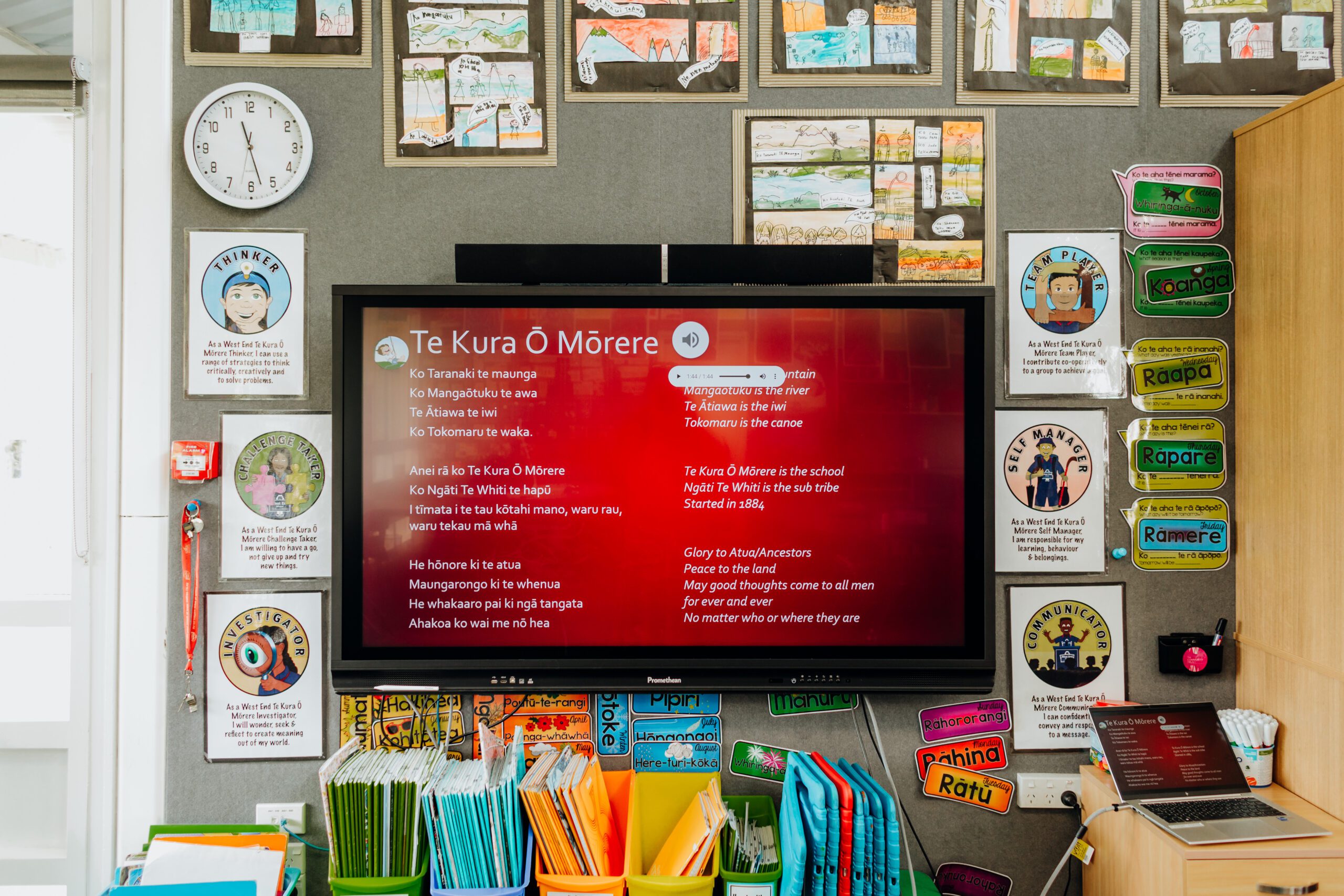
The Cultural Leadership Allowance acknowledges individual teachers’ leadership and expertise in specific cultural settings (for example, te ao Māori and/or Pacific knowledge), builds the cultural capability required of all teachers, and helps retain and cultivate more expertise, knowledge and cultural leadership.
The demand for these allowances has been overwhelming, showing that the provision is not high enough. That means there are hundreds of amazing kaiako doing cultural leadership work in schools around the motu who are still not being recognised for this mahi.

